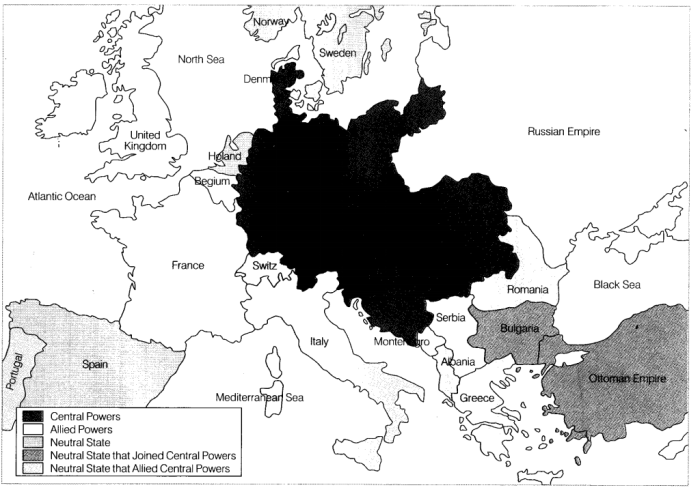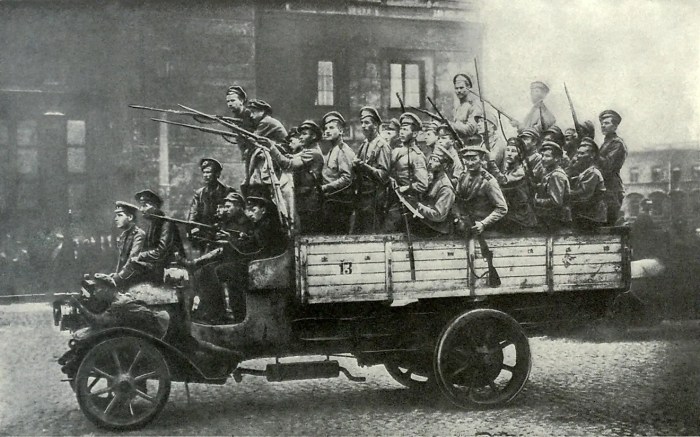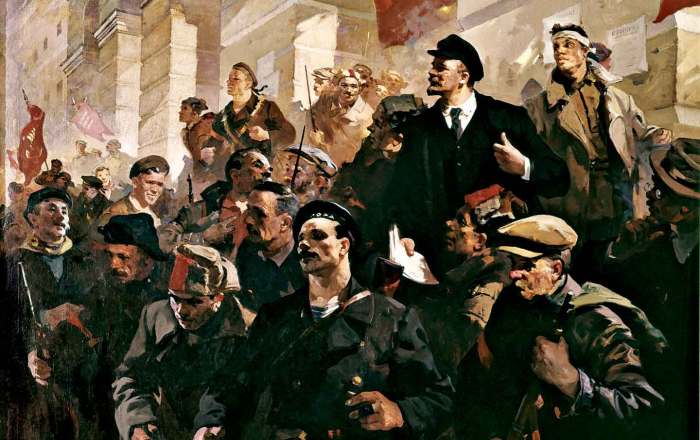Political continuities of the russian revolution – The Russian Revolution stands as a watershed moment in world history, its impact reverberating far beyond the borders of the former Russian Empire. At its core, the revolution was a complex interplay of political continuities and ruptures, shaping the development of the Soviet Union and leaving an enduring legacy on international politics.
This comprehensive analysis delves into the major political changes that unfolded during the revolutionary period, highlighting the key continuities in political thought and practice that persisted throughout. It explores the roles of the peasantry, working class, intelligentsia, and state in the revolutionary process, examining their social and economic conditions, their contributions to the revolution, and the impact of the revolution on their respective spheres.
Political continuity and change during the Russian Revolution
The Russian Revolution was a period of profound political change that began in 1917 and ended with the establishment of the Soviet Union in 1922. During this time, the Russian Empire was overthrown and replaced by a new socialist state.
The revolution was marked by both continuity and change in political thought and practice.
One of the most significant continuities was the role of the state. The Russian state had always been a powerful institution, and it continued to play a central role in the Soviet Union. The state was responsible for providing for the economic and social needs of its citizens, and it also played a key role in suppressing dissent.
Another continuity was the role of the intelligentsia. The intelligentsia had been a driving force behind the Russian Revolution, and they continued to play an important role in the Soviet Union. The intelligentsia provided the intellectual leadership for the new state, and they also helped to shape its cultural and ideological development.
However, there were also some significant changes in political thought and practice during the Russian Revolution. One of the most important changes was the rise of the Communist Party. The Communist Party was a new political party that was founded by Vladimir Lenin in 1918. The Communist Party was committed to the establishment of a socialist state, and it quickly became the dominant political force in the Soviet Union.
Another important change was the introduction of a new economic system. The Soviet Union adopted a centrally planned economy, in which the state controlled all aspects of the economy. This was a radical departure from the previous capitalist system, and it had a profound impact on the lives of Soviet citizens.
The Russian Revolution was a period of great political change. However, there were also some important continuities in political thought and practice. These continuities helped to shape the development of the Soviet Union, and they continue to influence Russian politics today.
The role of the peasantry in the Russian Revolution
The peasantry was the largest social class in Russia before the revolution. They were a diverse group, ranging from wealthy landowners to poor peasants who worked on the land of others. The peasantry had long been dissatisfied with their lot in life, and they were one of the driving forces behind the revolution.
The peasantry played a key role in the revolutionary process. They provided the manpower for the Red Army, and they also helped to organize the soviets, which were the local councils of workers and peasants. The peasantry was also responsible for some of the most violent acts of the revolution, including the Red Terror.
The revolution had a profound impact on the peasantry. The land was redistributed, and the peasants were given more control over their own lives. However, the peasantry also faced new challenges, such as the collectivization of agriculture and the forced labor camps.
The role of the working class in the Russian Revolution
The working class was another important social class in Russia before the revolution. They were concentrated in the major cities, and they worked in factories and mines. The working class had long been dissatisfied with their working conditions and their low wages.
They were also one of the driving forces behind the revolution.
The working class played a key role in the revolutionary process. They provided the manpower for the Red Army, and they also helped to organize the soviets. The working class was also responsible for some of the most important strikes and demonstrations during the revolution.
The revolution had a profound impact on the working class. The working class was given more rights and benefits, and they also gained more control over their workplaces. However, the working class also faced new challenges, such as the collectivization of agriculture and the forced labor camps.
The role of the intelligentsia in the Russian Revolution

The intelligentsia was a small but influential social class in Russia before the revolution. They were made up of intellectuals, professionals, and students. The intelligentsia had long been critical of the tsarist regime, and they were one of the driving forces behind the revolution.
The intelligentsia played a key role in the revolutionary process. They provided the intellectual leadership for the revolution, and they also helped to organize the soviets. The intelligentsia was also responsible for some of the most important propaganda and agitation during the revolution.
The revolution had a profound impact on the intelligentsia. The intelligentsia was given more opportunities to pursue their work, and they also gained more influence in society. However, the intelligentsia also faced new challenges, such as the censorship of their work and the forced labor camps.
The role of the state in the Russian Revolution

The Russian state had always been a powerful institution, and it continued to play a central role in the Soviet Union. The state was responsible for providing for the economic and social needs of its citizens, and it also played a key role in suppressing dissent.
The state played a key role in the revolutionary process. It provided the manpower for the Red Army, and it also helped to organize the soviets. The state was also responsible for some of the most violent acts of the revolution, including the Red Terror.
The revolution had a profound impact on the state. The state was given more power, and it also gained more control over the lives of its citizens. However, the state also faced new challenges, such as the need to build a new economy and to deal with the challenges of a multinational empire.
The impact of the Russian Revolution on international politics: Political Continuities Of The Russian Revolution

The Russian Revolution had a profound impact on international politics. It was the first successful socialist revolution in history, and it inspired socialist movements all over the world. The revolution also led to the creation of the Soviet Union, which became a major player in international affairs.
The revolution had a major impact on the balance of power in Europe. The Russian Empire had been one of the great powers of Europe, and its collapse left a power vacuum that was filled by Germany and the United States.
The revolution also led to the creation of the Comintern, which was a worldwide organization of communist parties that sought to spread revolution around the world.
The revolution had a major impact on the development of communism and socialism. The Soviet Union became a model for other socialist countries, and it provided support for communist movements all over the world. The revolution also led to the development of new theories of communism, such as Leninism and Stalinism.
The revolution had a major impact on the rise of fascism. The fascists were a group of right-wing nationalists who sought to create a new order in Europe. The fascists were inspired by the Russian Revolution, and they used many of the same tactics, such as propaganda and violence.
The rise of fascism led to the outbreak of World War II, which was one of the most devastating conflicts in human history.
FAQ Summary
What were the key political continuities that persisted throughout the Russian Revolution?
Despite the radical changes brought about by the revolution, certain political continuities remained, including the centralized authority of the state, the emphasis on collective action, and the importance of ideology in shaping political life.
How did the peasantry contribute to the Russian Revolution?
The peasantry played a crucial role in the revolution, providing both manpower and support for the revolutionary movement. Their grievances against the autocratic regime and their desire for land reform motivated their participation in the revolutionary process.
What was the impact of the Russian Revolution on the working class?
The revolution brought about significant changes for the working class, including the establishment of workers’ councils and the nationalization of industries. However, the working class also faced challenges, such as economic hardship and political repression.